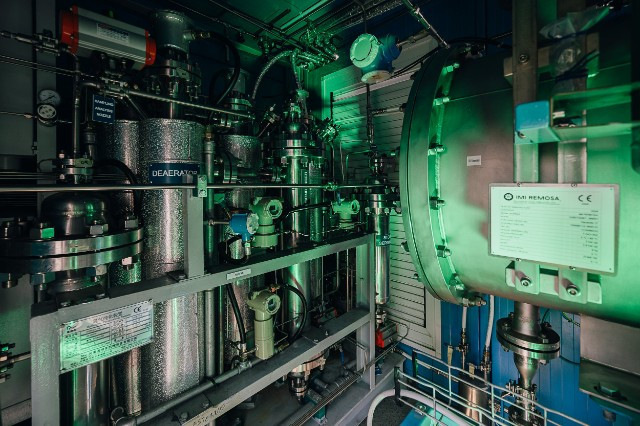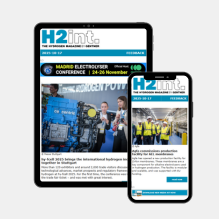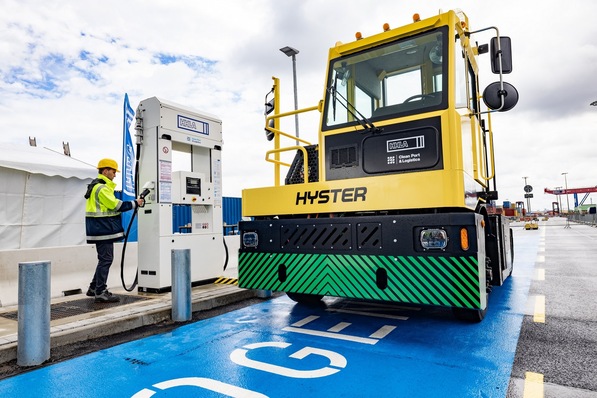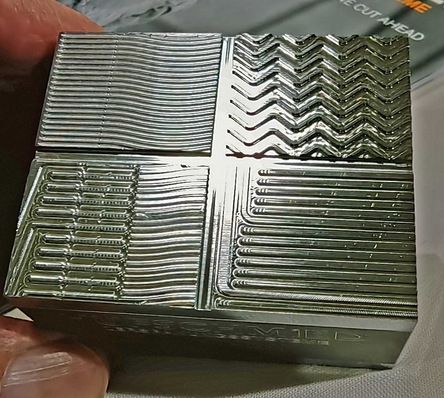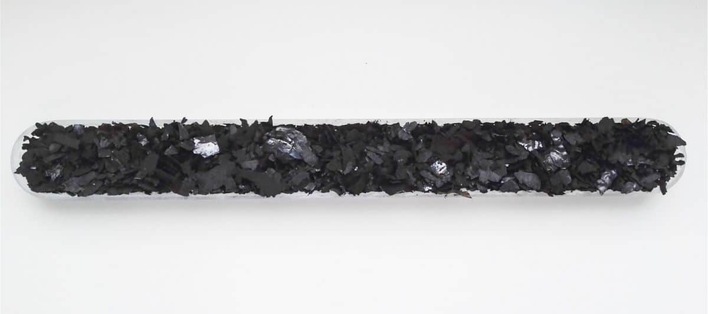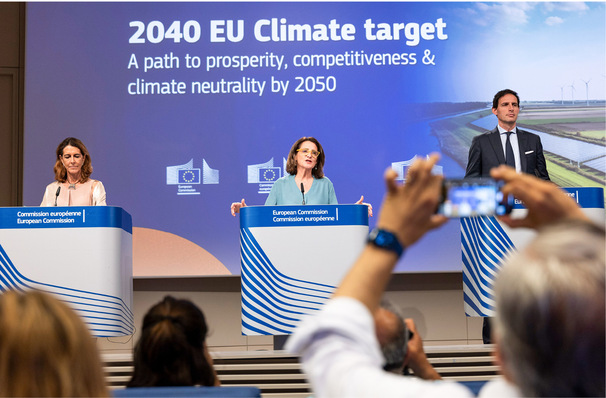The Fraunhofer Institute for Energy Infrastructures and Geothermal Energy (IEG) has commissioned a pilot plant in the city of Zittau, Germany, that for the first time feeds waste heat from a PEM electrolyzer into a district heating network using a heat pump. The aim is to improve the economic efficiency of hydrogen production.
LA-SeVe pilot plant to test sector coupling in practice
Fraunhofer IEG has inaugurated the “LA-SeVe” pilot plant at its Zittau site. The plant is part of the “IntegrH2ate” project, which is funded with around 10 million euros by the German Federal Ministry for Research, Technology and Space (BMFTR) as part of the H2Giga hydrogen lead project. Of this amount, approximately 4.2 million euros is allocated to Fraunhofer IEG.
At the heart of the plant is a PEM electrolyzer whose waste heat is fed into the municipal district heating network via a heat pump with a thermal output of up to 105 kilowatts. The heat pump is connected to the electrolyzer via a water circuit. The entire pilot plant is used to optimize operations under various operating modes – electricity-driven, heat-driven or hydrogen-driven – and is intended to test industrial sector coupling under real-world conditions.
Depending on whether the focus is on using surplus green electricity, saving fossil fuels or optimizing hydrogen production, the operating mode and parameters change. With the plant in Zittau, the project team is now testing in practice the industrial sector coupling concepts it has developed in recent years.
Objective: make economic use of by-products
The project focuses on the efficient use of by-products from PEM electrolysis – in particular heat and oxygen. Around one third of the electrical energy used in electrolysis is converted into waste heat, which until now has mostly remained unused. The oxygen produced can also be marketed as a commodity, provided it meets the required purity.
“We are testing on a technical scale how the by-products heat and oxygen from electrolysis can be optimally processed under dynamic operating conditions,” says Clemens Schneider, project manager at Fraunhofer IEG. In the future, the plant is also intended to serve as a test platform for further applications, such as methanation of CO2, closed carbon cycles or components like hydrogen burners and compressors.
The pilot plant was built on the premises of the municipal utility Stadtwerke Zittau. The electrolyzer is housed in a container approximately 12 meters long. The heat pump was installed in an existing hall. The plant has pilot character and, according to project partners, is a unique feature within the “IntegrH2ate” project.
At its Zittau site, Fraunhofer IEG is conducting research into the efficient conversion and coupling of electricity, gas and heat. The goal is to integrate unused heat potentials from industrial processes or environmental sources into municipal and industrial heating networks. The new pilot plant is intended to demonstrate how electrolyzers can be integrated into cross-sector energy systems.


